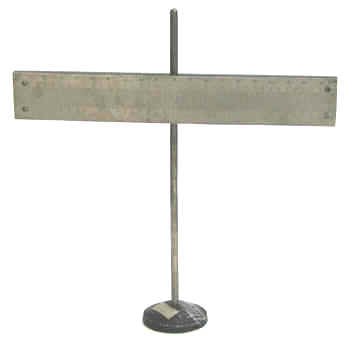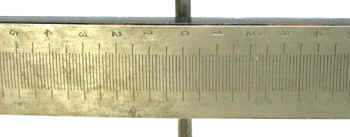Electrometer/Galvanometer Scale
This electrometer/galvanometer scale, obtained from the Czech Republic, dates from the first half of the twentieth century. The manufacturer is unknown. It is relatively small, ca. 8” long and 8” high, and is divided into 100 divisions on either side of zero (located in the center of the scale).
This type of scale was used to monitor the movement of a beam of light that was reflected off the mirror of a quadrant electrometer or reflecting galvanometer. When radiation was being measured, the goal was to quantify the current from an ion chamber connected to the electrometer. This was usually accomplished by measuring the time it took the reflected beam to move across a specific number of divisions on the scale.
Until 1860 or so, the procedure was to measure the deflection of the galvanometer (quadrant electrometers had yet to be invented) by viewing the reflected image of the scale via a telescope. It worked, but it was an inexact and cumbersome process. The first to employ a reflected beam of light was Lord Kelvin (William Thompson). The story is that he conceived the idea while watching a beam of light that was reflected off the monocle that hung by a ribbon from his neck.


Reference
Sylvanus P. Thompson, The Kelvin Lecture: The Life and Work of Lord Kelvin, The 1908 Annual Report of The Smithsonian Institution, published 1909, page 745.
